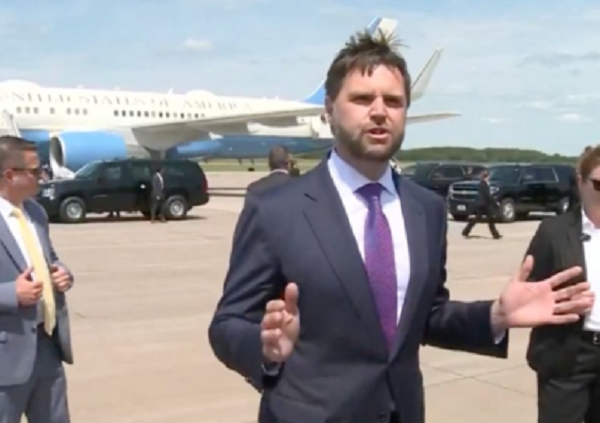Senator JD Vance’s (R-OH) beard during the debate may be perceived by women as indicative of “aggression,” while Minnesota Governor Tim Walz’s (D-MN) expressive eyes reflected his enthusiasm, according to an analysis by Politico examining body language signals from the recent vice-presidential debate.
The piece, written by Joe Navarro, a body language specialist with experience in the FBI, explored eight specific body language indicators from the event. Navarro, who has a background in the national security division’s elite behavioral analysis program, began his commentary with Vance’s beard, asserting its significance. He suggested that, particularly for women, a beard can be interpreted as more intimidating, symbolizing what he characterized as “aggression and opposition to feminist ideals.”
He wrote:
“One of the first bits of nonverbal communication to appear in the debate was on JD Vance’s face: his beard. As POLITICO Magazine has noted before, Vance is the first White House wannabe to wear facial hair in 80 years. Our appearance is fundamental to our body language, and research indicates that voters see beards as (surprise, surprise) more masculine. That can be positive to some, reading as strength and competence. But to others, especially women, it can be negative, conveying aggression and opposition to feminist ideals.”
Navarro noted several additional insights from Vance, highlighting that he placed his hand on his chest while addressing the topic of abortion, which conveyed a sense of profound emotion and authenticity.
“I can’t say whether Vance was being authentic or not — I’d have to see him perform the gesture in different contexts,” he concluded.
Walz exhibited a range of facial expressions, often appearing wide-eyed during the evening. Nevertheless, a body language expert noted that this merely reflected the enthusiasm of the Democrat:
“When Walz felt especially passionate about something, he’d open his eyes wide as saucers. Eye-popping can sometimes be a sign of surprise, but for Walz, it simply revealed his emotional intensity — like this moment during an exchange about abortion. The orbicularis oculi muscle, working in concert with the corrugator and frontalis muscles, contract to raise the eyebrows — a dynamic and emphatic facial motion that grabbed the viewer’s attention. Early humans would have made such facial gestures to communicate strong emotions, like “danger is close.””
Politico debate analysis: Vance's beard is sexist, Walz's bulging eyes are lovely pic.twitter.com/qICtEws021
— End Wokeness (@EndWokeness) October 2, 2024






